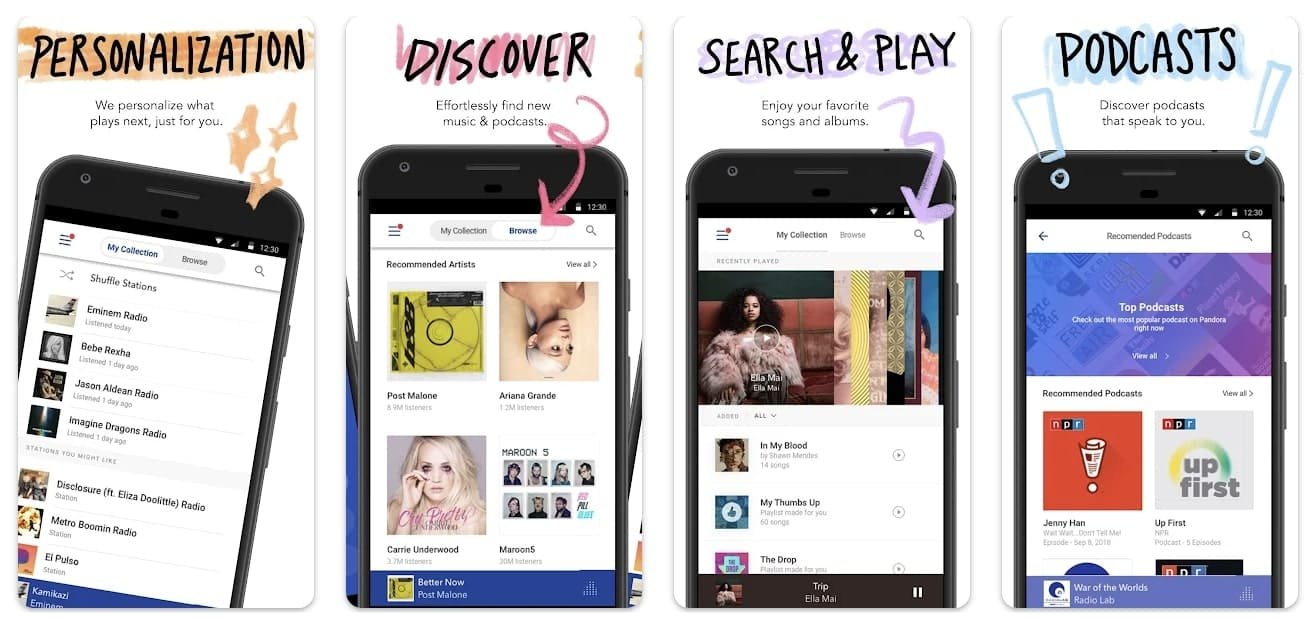The downfall of Pandora: Why Did Pandora Music Fail?

Pandora, once a trailblazer in the music streaming industry, has faced significant challenges in recent years. Despite its early promise and innovative features, the service has struggled to maintain its popularity. Here we’ll explore the reasons behind Pandora’s decline, examining key factors that contributed to its downfall.
Table of Contents
ToggleThe Rise of Pandora
Founded in 2000, Pandora revolutionized music streaming with its personalized radio service powered by the Music Genome Project. The platform allowed users to create custom radio stations based on their favorite songs and artists.
Providing a tailored listening experience that resonated with audiences. By the mid-2010s, Pandora had gained millions of active users and was a leader in the streaming space.

Why Did Pandora Music Fail?
- Intense Competition: These services offered more than just internet radio; they provided on-demand streaming, vast music libraries, curated playlists, and exclusive content. While Pandora remained focused on its radio model, competitors were innovating and expanding their offerings, drawing users away.
- Shift in User Preferences: Consumer preferences began to shift toward on-demand music access. Users increasingly desired the ability to play any song at any time, a feature that Pandora’s radio model didn’t support. This shift led to a gradual decline in active users, as many flocked to services that catered to this new expectation.
- Inadequate Monetization Strategy: Pandora’s revenue model relied heavily on advertising for its free tier, while its premium tier struggled to attract enough subscribers. The company faced challenges in converting free users to paying customers. In contrast, other platforms successfully leveraged subscription models to generate significant revenue.
- Limited Music Library: While Pandora was initially praised for its innovative music recommendation system, it lagged behind competitors regarding the sheer volume of available music. Users found that they could not access many songs, albums, or artists they desired, which limited the platform’s appeal.
- User Interface and Experience: Users increasingly favored platforms with modern aesthetics, intuitive navigation, and engaging features like personalized playlists. As a result, Pandora struggled to retain its user base, as many opted for competitors that offered a more enjoyable and contemporary user experience.
- Failure to Innovate: Pandora’s reluctance to innovate and adapt to changing market demands contributed significantly to its decline. While Spotify introduced features like collaborative playlists, social sharing, and podcast integration, Pandora largely stuck to its original radio model. This failure to innovate made it seem stagnant in a rapidly evolving industry, further alienating users.
Why Is Pandora Not Popular Anymore?
- Market Saturation: The music streaming market has become saturated, with numerous platforms vying for attention. This saturation has made it challenging for any single service, including Pandora, to stand out. As users have more choices, they are likely to select platforms that provide the best overall experience, which has not been Pandora in recent years.
- Perception Issues: Pandora has developed a perception problem among users. Many view it as outdated or less relevant compared to newer platforms. This perception has been exacerbated by negative media coverage, which often highlights Pandora’s struggles without acknowledging its historical significance in shaping the music streaming industry.
- Lack of Exclusive Content: In an era where exclusive content plays a crucial role in attracting subscribers, Pandora has struggled to offer compelling reasons for users to choose its service. Other platforms have secured exclusive deals with artists and labels, offering unique releases, live performances, and podcasts that attract and retain listeners.
- Changing Industry Dynamics: The music industry is continually evolving, with trends shifting toward short-form content, such as TikTok-style clips. Platforms that adapt to these changes, like TikTok and YouTube Music, have gained traction. This shift in content consumption has left Pandora with fewer avenues for growth.
Lessons Learned from Pandora’s Decline
Pandora’s journey offers several key lessons for businesses in the rapidly changing tech landscape:
1. Adaptability is Key
The music streaming industry is dynamic, and platforms must continually evolve to meet user expectations. Companies should be prepared to pivot their strategies, update features, and adopt new technologies to stay relevant.
2. User-Centric Design Matters
Investing in a user-friendly interface and enhancing the overall user experience can significantly impact user retention. Services must prioritize intuitive design and seamless functionality to attract and keep users engaged.
3. Understand Your Audience
Regularly assessing and adapting to the preferences and behaviors of the target audience is crucial. Platforms should gather user feedback and analyze listening habits to tailor offerings effectively.
4. Diversification of Revenue Streams
Relying on a single revenue model can be risky. Businesses should explore multiple monetization strategies, such as premium subscriptions, partnerships, and exclusive content, to enhance financial stability.
5. The Importance of Innovation
Innovation should be a continuous process, not a one-time effort. Staying ahead of trends and introducing new features—such as social sharing capabilities or integration with emerging platforms—can differentiate a service from its competitors.
6. Building Strong Artist Relationships
Maintaining healthy relationships with artists and labels is essential for ensuring a diverse and appealing music catalog. Engaging with artists can lead to exclusive releases and partnerships that enhance a platform’s value.
7. Branding and Perception Management
How a brand is perceived can greatly influence its success. Companies need to actively manage their public image and address any negative perceptions through effective communication and marketing strategies.
By analyzing these lessons, current and future music streaming platforms can avoid similar pitfalls and better position themselves in a competitive market.
Conclusion:
Pandora’s decline highlights the need for adaptability in the fast-evolving music streaming industry. Key lessons from Pandora’s journey emphasize the importance of continual innovation, understanding audience preferences, and strong artist relationships. As the market grows, these principles are vital for any platform aiming to succeed. While Pandora may no longer lead the industry, its legacy offers valuable insights into staying relevant in a competitive landscape.






